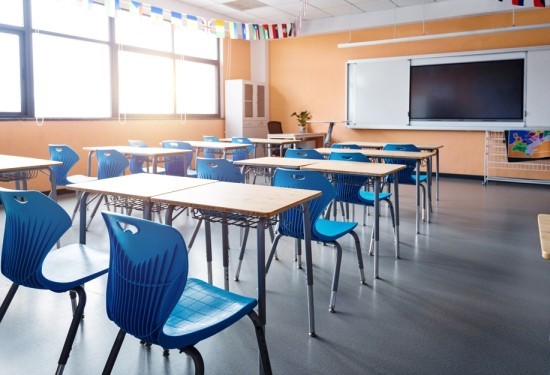
Independent schools across the UK are under growing financial strain. Spiralling costs, revenue pressures, and unsupportive policy changes are all accelerating a trend of school closures. The burdens are structural: operating costs are rising, pupil intakes are falling, revenues are constrained, and governance frameworks are often ill-equipped to navigate rapid financial change.
As of 2024, the UK has approximately 2,550 independent schools educating around 620,000 pupils, representing about 5.8% of the total school-age population, according to ISC estimates. Since 2010, more than 1,100 independent schools have closed, according to data shared in a parliamentary debate on private school closures. Closures now run at around 50 per year, often driven by insolvency amid spiralling costs and dwindling revenues.
The multiple financial headwinds facing independent schools
VAT on School Fees
In January, private schools lost their VAT exemption, with fees now subject to 20% VAT. After deductions, this is expected to raise fees by 15-17%. Compounding this, from April 2025, charitable independent schools will also lose 80% relief on business rates. Treasury Minister Torsten Bell estimated this could lead to 100 additional closures over three years. However, the Independent Schools Council (ISC) argues this underestimates the real impact, warning that reduced affordability will lower enrolments, displace pupils into an overstretched state sector, and disproportionately affect lower- and middle-income families.
Rising Costs and Declining Rates Relief: employer NICs and pensions
Schools face a sharp increase in payroll costs. Employer National Insurance Contributions (NICs) rose from 13.8% to 15% in April 2025. At the same time, the National Living Wage rose by 6.7%. Last year, employer contributions for the defined benefit Teachers’ Pension Scheme (TPS) increased by five percentage points to 28.68%, based on the outcome of the 2020 scheme valuation, which accelerated the departures of many schools from the TPS. But for those remaining, mounting financial pressure is the burden. These escalating employment changes, alongside the loss of rates relief, have materially increased the cost base for many schools well beyond sustainable levels.
Fixed Revenues vs. Inflatiom
Many schools have limited flexibility to increase fees. Some parents prepay years in advance, locking schools into nominal income streams while operating costs rise. This inflationary mismatch erodes margins and makes long-term financial planning for school management more difficult.
Falling Pupil Intakes and Deferred Decisions
Ongoing economic uncertainty has accelerated softened demand. In 2024, the ISC reported a 1.7% overall pupil drop (10,000 pupils) and a 4.6% decline in Year 7 entrants (5,000 pupils), with applications falling 5-10% in smaller schools due to affordability constraints. Mid-year withdrawals have risen by 2-3%, with 10-20% of these vacancies reportedly remaining unfilled, particularly in less competitive markets. Early years and preparatory schools are particularly affected, with a 3-5% enrolment drop in 2024, further exacerbated by a 20% fall in birth rates in London. Declining intakes are eroding revenues and increasing the risk of insolvency, especially for smaller schools.
Low Political Support
There is little government appetite to mitigate the impact of VAT or to provide relief for independent schools, even as closures grow. The policy environment is increasingly unsupportive, and no compensatory measures have been proposed to reduce displacement into the state sector.
Governance Challenges
Trustees of independent schools often bring strong values and oversight but may lack experience in financial restructuring. Many schools delay difficult decisions in the hope of recovery, reducing the scope for successful outcomes. Proactive governance – through early warning indicators, forecasting, and professional advice – is critical to navigating distress. Without it, closures will continue to mount, not due to mismanagement but to an inability to adapt fast enough to a changing financial landscape.
Safeguarding independent schools: strategies for stabilisation
In the face of rising costs, declining enrolments, and limited policy relief, schools must stabilise finances and build long-term resilience. While the challenges are systemic, they are not insurmountable. Early, strategic action can help school management regain control, preserve educational quality, and avoid disruptive outcomes.
The follow strategies are relevant considerations:
The pressures on independent schools are significant, but manageable. Time is the most valuable resource in any business restructuring. Schools that act early retain more options, avoid reputational damage, and have the greatest chance of protecting staff, students, and legacy.
BTG Advisory has significant experience supporting independent schools through complex financial challenges. Our team can offer pragmatic, confidential advice tailored to each school’s unique position. Whether through refinancing, cost management, or revenue/capital raising strategies, early action can safeguard institutions, protect jobs, and sustain confidence across parent and stakeholder communities.
Daily News Round Up
Sign up to our daily news round up and get trending industry news delivered straight to your inbox
This site uses cookies to monitor site performance and provide a mode responsive and personalised experience. You must agree to our use of certain cookies. For more information on how we use and manage cookies, please read our Privacy Policy.